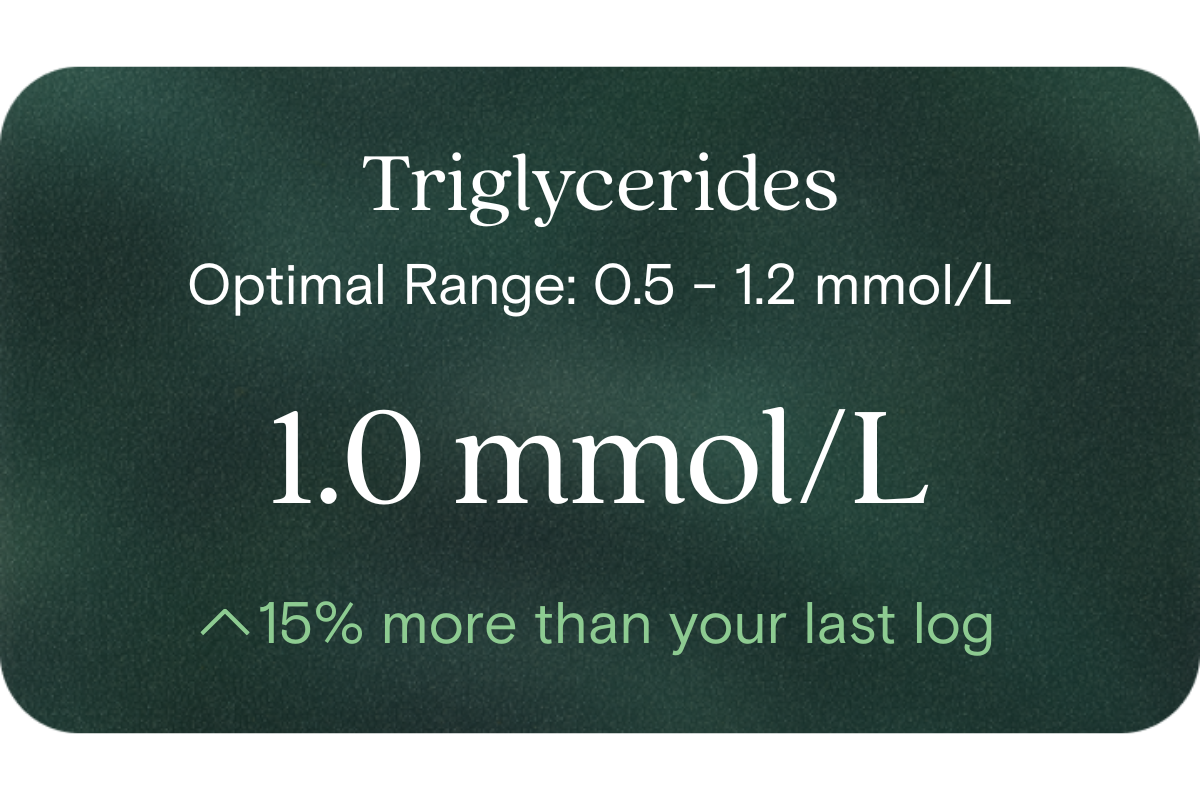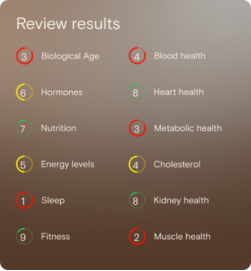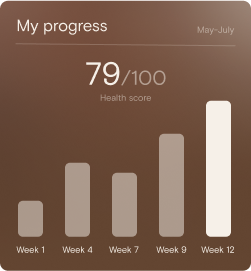What is triglycerides?
Triglycerides are a type of fat (lipid) found in your blood and stored in your fat-cells. After you eat, the body converts excess kilojoules into triglycerides for later use. They circulate in your bloodstream as part of your body’s energy supply and storage system.
Why does it matter for long-term health and wellbeing?
While this isn’t about treatment or managing disease, triglycerides give you a window into how well your metabolism, muscle-fat balance and fuel systems are working. In the Australian context, raised blood triglycerides frequently co-occur with higher waist circumference, low physical activity and changes in glucose regulation, which can signal reduced metabolic efficiency and longer-term performance decline. Monitoring enables you to optimise rather than wait for problems to arise.
What’s an optimal level of triglycerides?
- Optimal range: 0.5 – 1.2 mmol/L
- Standard lab reference range: 0.5 – 2.1 mmol/L
When your level is within the optimal range, it suggests your body is managing fats and energy stores efficiently. When it falls outside, it prompts investigation and action.
What influences triglyceride levels?
Several factors influence triglycerides:
- Excess caloric intake (eating more kilojoules than you burn) leads to storage of triglycerides.
- Alcohol intake, as alcohol is calorie-dense and influences fat metabolism.
- Low physical activity and poor muscle health — less usage of circulating fats and reduced clearance.
- Central (abdominal) fat accumulation, signalling a shift in how your body manages energy.
- Alterations in glucose/insulin balance and thyroid hormone levels (e.g., higher TSH) can also affect how triglycerides are produced and cleared.
- Dietary composition (especially high-sugar or refined-carbohydrate intake) plays a role.
What does it mean if triglycerides are outside the optimal range?
If your level is above the optimal range (e.g., >1.2 mmol/L and moving toward or above the standard reference ceiling of 2.1 mmol/L) this suggests your metabolic system may be under strain: your energy uptake (food, alcohol) may be exceeding your energy expenditure, your fat-vs-muscle balance may be shifting unfavourably, or your cellular energy pipelines may need better support. It’s a cue to review diet, exercise, body composition and metabolic health — not necessarily that something is wrong, but that there is opportunity for improvement. If the level is below optimal, it could reflect under-nourishment or inefficient storage, so context matters (e.g., very low body weight, chronic illness, etc.).
How can I support healthy triglyceride levels?
To optimise your triglycerides:
- Ensure your energy intake matches your energy expenditure (avoid habitual excess kilojoules or extended surplus).
- Engage in regular physical activity, especially that which supports muscle strength and metabolic turnover (resistance training + aerobic work).
- Prioritise nutrient-dense whole foods, minimise high-sugar, refined-carbohydrate and excess saturated-fat consumption.
- Limit alcohol intake (it adds kilojoules and influences fat metabolism).
- Support good muscle-to-fat ratio and avoid central weight gain by balancing movement, sleep, and recovery.
- Monitor your metrics (body composition, waist circumference, blood markers) to see trends rather than one-off values.
This information is provided for general health and wellness purposes only and does not replace medical advice.
References
- Better Health Channel. Triglycerides: common type of fat in your blood. Victorian Government Health Information.
- Healthdirect Australia. Triglycerides: what are they and why measure them?
- Chew GT, Gan SK, Watts GF. Revisiting the metabolic syndrome. Med J Aust. 2006;185(8):445-9.
- Harris MF. The metabolic syndrome. Australas Fam Physician. 2013;42(8).




















.png)
